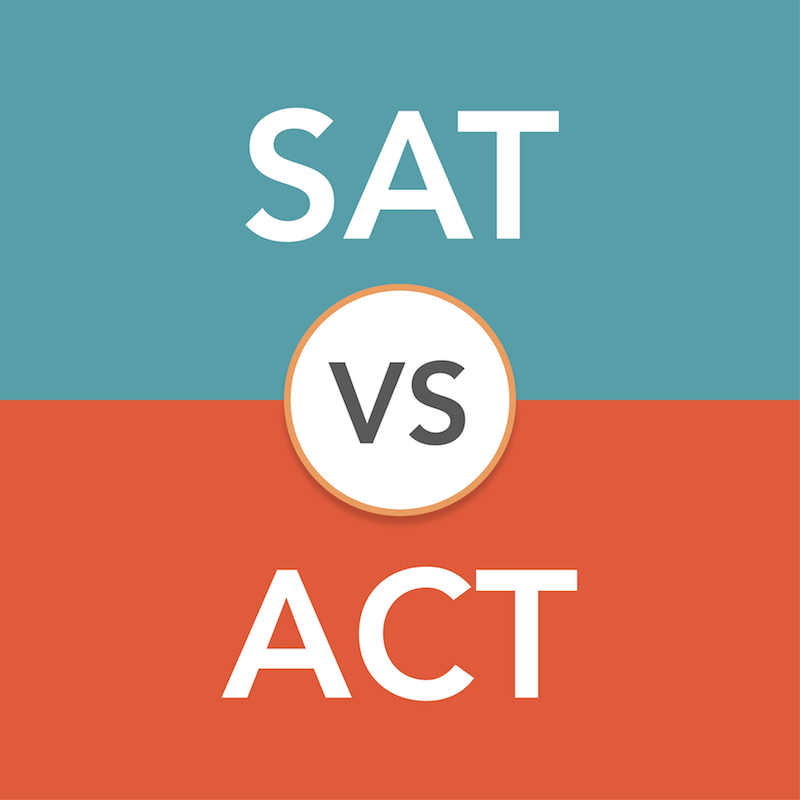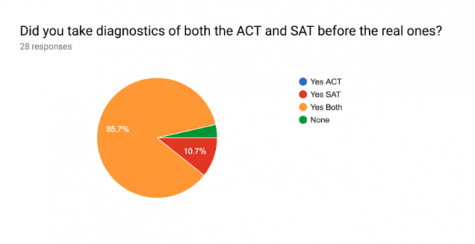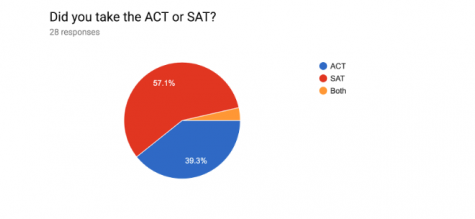SAT vs. ACT
The pressure and stress standardized testing such as the SAT and ACT causes is infamous. These two tests are required in order to apply to most colleges, and are widely considered to be major factors in determining where one is accepted. But what really is the difference between the ACT and SAT? What do most students in Ramaz take, and why?
The College Entrance Examination Board made the SAT the only national standardized college entrance test in the 1920s. The SAT has a reading section, a writing section, and two math sections, one with a calculator and one without. For scoring purposes, reading and writing are combined for an English score (out of 800 points) and the two math sections are added together, similarly creating a Math score out of 800. In total, a student’s final SAT score is out of 1600, or the sum of the English and Math scores. The average SAT score from 2018 from graduating seniors was a 1060. Those who choose this test tend to do so because it features less questions than the ACT, with more time per question. However, each question is less straightforward and requires more analytical thinking.
The SAT, as a College Board exam, has a feature the ACT does not. Through high PSAT and SAT scores, students may qualify as Nation Merit Scholars. The National Merit Scholar Program is a College Board Program for students who score within the top 0.5 percentile of the PSAT in their state. After reaching this level, students must sit for an SAT and attain a certain score, with the threshold varying by state. There are 15,000 finalists, with only about 8,000 receiving Merit Scholarships. All finalists are considered for one of the 2,500 dollar scholarships from the National Merit Scholarship Corporation. Others receive scholarships in the forms of full-ride tuition, yearly stipends, and travel or research funds. Semi-Finalists must submit scholarship applications including essays and their accomplishments.
The alternative to the SAT- the American College Testing Program (ACT)- came about in the late 1950s, when colleges were looking to increase enrollment numbers as well as find ways to fulfill more advanced education. The ACT grades students in four sections: english, math, reading and science, each graded out of 36. A student’s composite score is a compilation of all of the individual scores from each section divided by the number of sections on the test. The highest composite score one can obtain is a 36, but the average ACT composite score is a 20.9. The main difference between the SAT and ACT is that the ACT has an additional section, the science section, that the SAT does not. In addition, the ACT has more questions, so those who have issues with time management find this to be a difficult test. The ACT also appeals to those who qualify to take this test over multiple days, as these students are able to take an individual section a day or two a day rather than taking the whole test in one sitting. In addition, students who have extra time also tend to take the ACT more because the problem of time management is resolved, quite simply, with more time.
The Ramaz College Guidance office says that each student should take the test that is best suited for them, and that no generalization can fit each individual student. Mr. Blumenthal, Head of College Guidance, told the Rampage that “The PSAT is a good introduction to the SAT and gives students a sense of that exam format and students could decide if they feel comfortable with it,” adding that “The ACT no longer offers a comparable “pre” exam; however, the College Office is happy to provide a full-length sample exam so that students can get a feel for the ACT.”
College guidance convention dictates that colleges no longer weigh the SAT and ACT differently, so each student’s choice of exam should not affect their admissions decision.
28 students in the current Junior grade were polled anonymously to see which test they took and why. More than ¾ of those who took the poll took diagnostics of both the SAT and ACT, but more students took the SAT by almost 20 percent. One such student said “I had trouble finishing the science section of the ACT, but had no time issues on the SAT. I did better on my SAT diagnostic, so I took that test.” “Timing” was the largest factor in helping students decide what test to take, with many relying on their performance from the diagnostic to discern their weaknesses. Many found that having less math on the ACT and being able to use a calculator was helpful, while few named the science section as a reason to take the ACT. One student said they chose their test knowing that they would be able to “improve more” on the ACT.
The College Guidance Office provided statistics for the Ramaz students in the graduating classes of 2016,2017,2018 and 2019. In the Class of 2019, 91 students took standardized tests for college. Of those students, 66 (72.5%) took the ACT, 34 (37.4%) took the SAT, and 11 (12.1%) took both. In the Class of 2018, 97 students took standardized tests for college. Of those students, 66 (68%) took the ACT, 42 (43.3%) took the SAT, and 11 (11.3%) took both.In the Class of 2017, 88 students took standardized tests for college. Of those students, 59 (67%) took the ACT, 42 (47.7%) took the SAT, and 13 (14.8%) took both. In the Class of 2016, 104 students took standardized tests for college. Of those students, 48 (46.2%) took the ACT, 64 (61.5%) took the SAT, and 8 (7.7%) took both. In addition, Mr. Blumenthal said that “The SAT used to be more popular with Ramaz students and with most students in New York and the East Coast. The Class of 2016 was the last grade to have the Old SAT before the New SAT was introduced. There was a distinct shift at that time for students to take the ACT because they were unsure about the New SAT format and the scoring scale.”
According to the Washington Post, around 2 million students in the class of 2018 in America took the SAT while 191 million students of the same graduating class took the ACT. However, when you include international students as well these results shift; 2.1 million students of the graduating class took the SAT. This number is a staggering increase of 20% from the previous year, with 1.7 million students worldwide taking the SAT. In the years since 2012, the ACT was the leading test, but the College Board made adjustments to increase usage such as deals with schools and changing the tests.






Fazle Rabbi • Jun 21, 2020 at 4:32 pm
To be very honest it was a very helpful resource and so I am thankful to the author of this article .this article clearly says that ACT is 10 times pore popular than SAT among the international students but I really wanna know one thing? Can you please answer it to me?
My question is that all the seniors of my country those who have studied or are studying in the leading universities of the world such as Harvard, MIT OF Oxford they have recommended SAT for applying to these universities.so what should I choose when it’s my turn (by the way now I am in 11th grade) please answer me .it will be very helpful to me